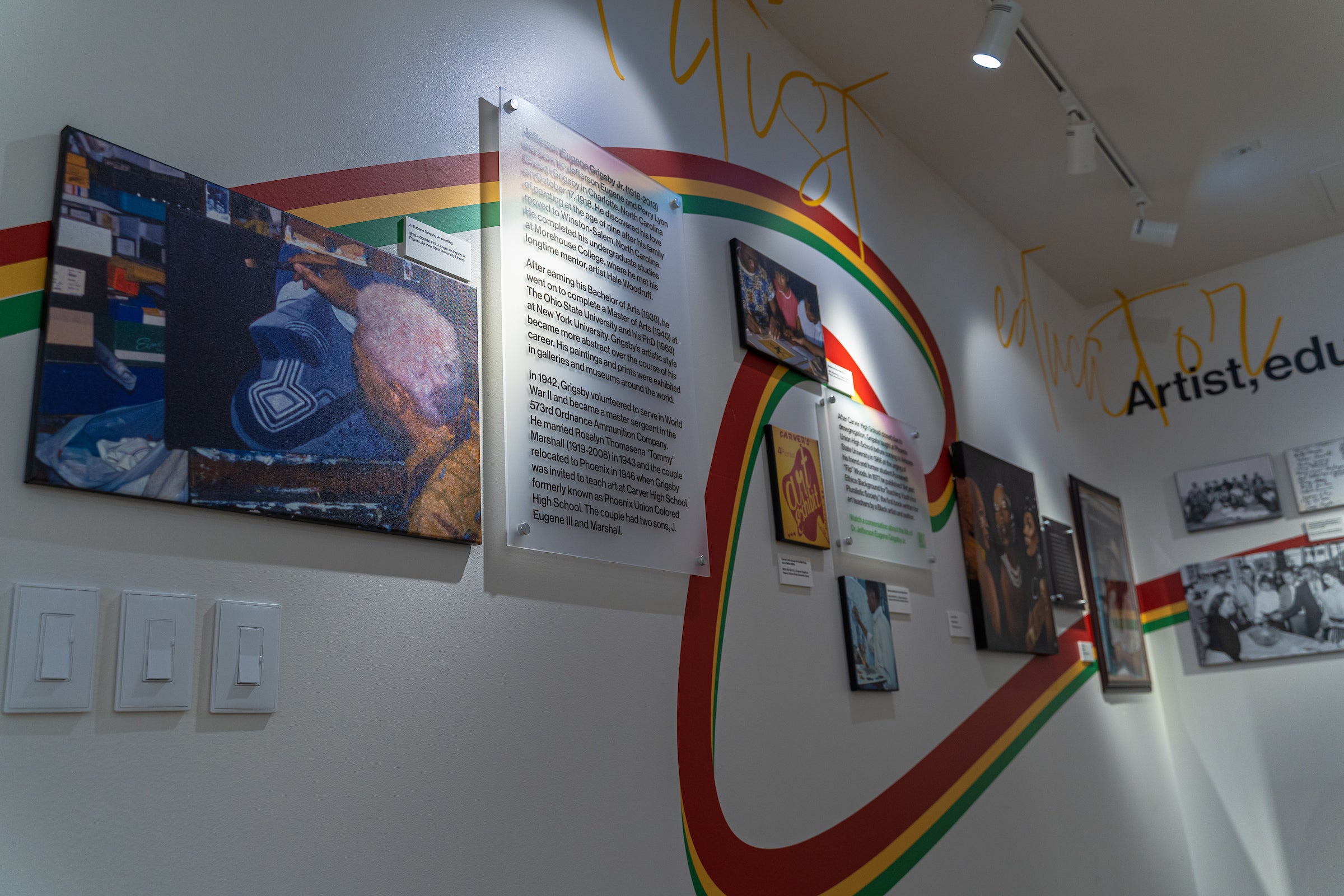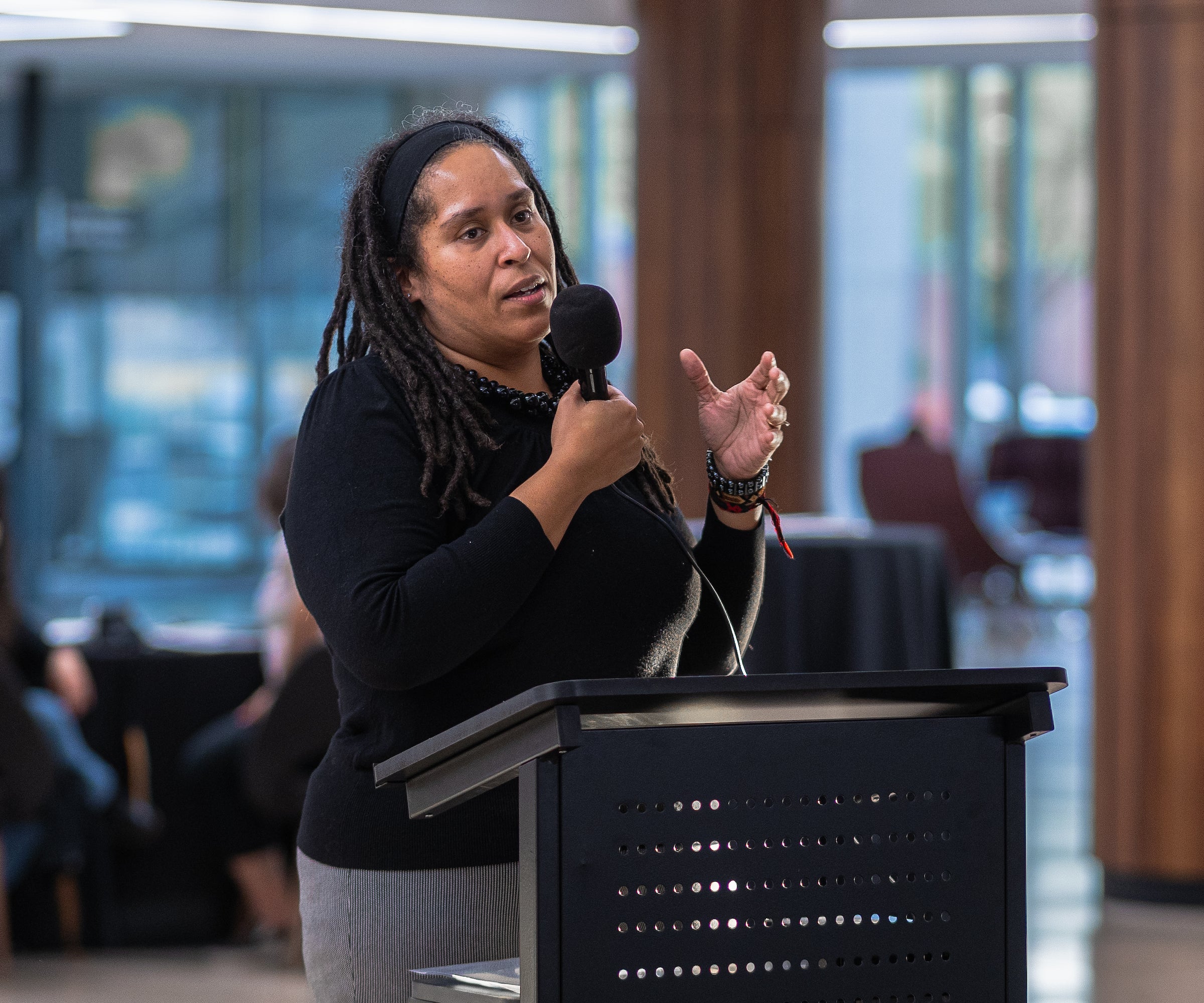In September 2019, Shannon Walker got a phone call from two faculty members in the Arizona State University Art Building.
They told Walker there were boxes collecting dust in a storage area, and asked if she wanted to come over and look at what was inside the boxes before they cleared the room out.
It was not an unusual phone call for Walker, who oversees ASU’s archives and gets calls almost every week from some department about its collections.
Walker doesn’t get her hopes up. Often, the items aren’t associated with the school’s history.
Like the time she was offered a saddle.
But, as she began scrutinizing the 12 to 15 boxes at the Art Building, she found negatives, slides and notes from a Dr. J. Eugene Grigsby. She didn’t know much about Grigsby, other than he had been an art professor at ASU — but after carefully packing the material, she did some research online.
“I was like, ‘This is amazing,’” Walker said. “It’s amazing that we have some materials from him.”
It took a year for Grigsby’s work to be processed at the ASU Polytechnic campus, and then COVID-19 hit, delaying any notion of displaying his work.
“But it gave us time to work and allowed us to realize what we had,” Walker said.
Four years later, Grigsby’s work – and his legacy – is in the spotlight in an exhibit recently opened at Hayden Library titled "Black History at ASU: The legacy of Dr. J. Eugene Grigsby Jr." It's the first exhibit presented by Black Collections, a new archival repository within the Community-Driven Archives Initiative at ASU Library.
The exhibit showcases artwork depicting Black life, and features some of Grigsby's work along with other Black artists he encouraged and mentored — including former student Clottee Hammons, Leonard Wilson, Dee Dee Woods and Roosevelt “Rip” Woods, a former student and former professor at ASU. It's free to the public and open until June 30.
“I really wanted to make sure that we were highlighting and uplifting the Black history of Arizona,” said Jessica Salow, assistant archivist of Black Collections at ASU.
A view of the exhibit "Black History at ASU: The Legacy of Dr. J. Eugene Grigsby Jr." at Hayden Library on the ASU Tempe campus during its opening reception on March 22. Photo by Alwaleed Alrasbi/Arizona State University
Grigsby did just that, not only as a professor in the art school from 1966 to 1988, but as one of the most prominent Black artists, educators and community activists in the state.
During his tenure at ASU — his teaching focused on art education and, in particular, ART 480, which was offered as “Art in the High School” — Grigsby became the first Black author and artist to publish a book for art educators. The book, titled “Art and Ethnics: Background for Teaching Youth in a Pluralistic Society,” was called a “landmark in literature of art education” by art education consultant Laura Chapman.
Grigsby, who passed away in 2013, also founded COBA – the Consortium of Black Artists and Others for the Arts — which annually showcases the work of inner city high school students in Phoenix. In addition, COBA brought artists such as Maya Angelou, Harry Belafonte and Danny Glover to Phoenix for workshops and other events, including the annual Inner City Multicultural Invitational Youth Art Exhibit.
If that wasn’t enough, Grigsby founded Artists of the Black Community of Arizona in 1980. The group, composed primarily of printmakers, painters, sculptors and photographers, met regularly to plan exhibitions and programs.
“I was blown away by his network,” Salow said. “He literally was connected to everybody here, including some of the really foundational Black and African American families that were here since the 1950s and 1960s. I was very much appreciative of that network, which impacted and uplifted not just artists, but Black and African American people in this city.”
Jessica Salow, assistant archivist of Black Collections at ASU, talks at the opening event for the "Black History at ASU: The Legacy of Dr. J. Eugene Grigsby Jr." exhibit on March 22 at Hayden Library on the ASU Tempe campus. Photo by Alwaleed Alrasbi/Arizona State University
Hammons, who was a student of Grigsby’s in 1973, said she felt “invisible and dismissed" as a Black female artist until he took her under his wing.
“He was the first one to show me any sort of respect,” Hammons said. “He did that for other artists as well. He influenced us in a way that kept us alive.”
As she spoke about the exhibit Wednesday night during a reception, Salow began to cry, not only because it was the first Black Collections exhibit she had curated but because of the man it honored.
“He was a force of nature, honestly,” she said.
Top photo: A photo of a visitor viewing art during the opening event for the exhibit "Black History at ASU: The Legacy of Dr. J. Eugene Grigsby Jr." at Hayden Library on the ASU Tempe campus on March 22. Photo by Alwaleed Alrasbi/Arizona State University
More Arts, humanities and education

Professor's acoustic research repurposed into relaxing listening sessions for all
Garth Paine, an expert in acoustic ecology, has spent years traveling the world to collect specialized audio recordings.He’s been to Costa Rica and to Ecuador as part of his research into innovative…

Filmmaker Spike Lee’s storytelling skills captivate audience at ASU event
Legendary filmmaker Spike Lee was this year’s distinguished speaker for the Delivering Democracy 2025 dialogue — a free event organized by Arizona State University’s Center for the Study of…

Grammy-winning producer Timbaland to headline ASU music industry conference
The Arizona State University Popular Music program’s Music Industry Career Conference is set to provide students with exposure to exciting career opportunities, music professionals and industry…




